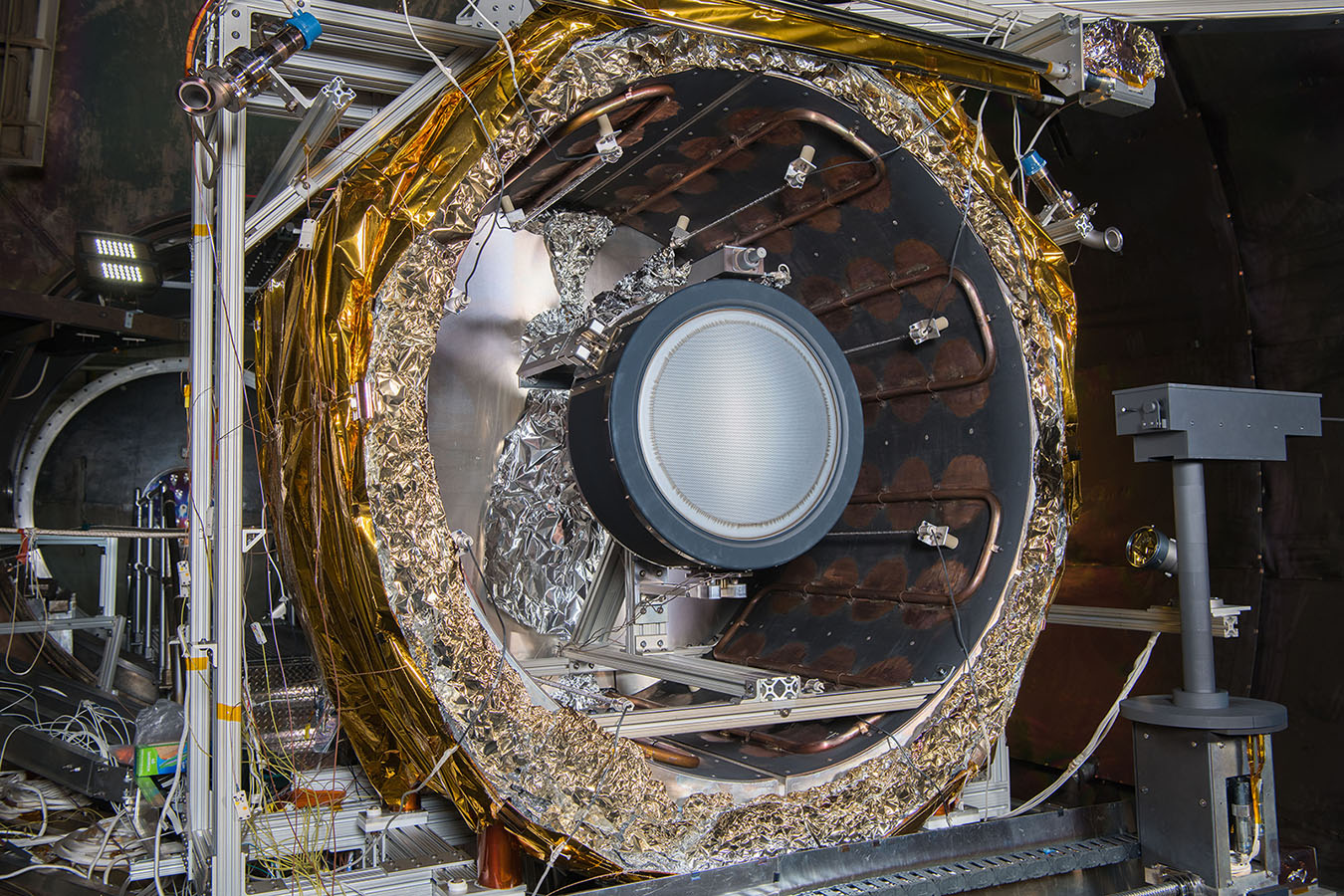Stay Up to Date
Submit your email address to receive the latest industry and Aerospace America news.
The Electric Propulsion Technical Committee works to advance research, development and application of electric propulsion for satellites and spacecraft.
Editor’s note: This article has been corrected to remove a reference to Singapore-based startup Aliena’s Hall effect thruster. The company’s low-power thruster was not operated in orbit as we initially reported.
For electric propulsion in space, the year was all about the numbers: more types of systems, higher and lower power systems, longer duration tests, higher efficiencies and more on-orbit operational systems.
NASA’s Glenn Research Center of Ohio executed six commercial evaluation licenses for its subkilowatt HET, or Hall effect thruster, system, and the Northrop Grumman team completed the critical design review in August for the NGHT-1X whose design is based on this technology. The HET component of ASTRAEUS, NASA Jet Propulsion Laboratory’s Ascendant Sub-kW Transcelestial Electric Propulsion System, completed a qualification wear test in September, in which it exceeded 1.55 meganewton-second total impulse and 7,200 hours of operation. This was the first 100-kilogram throughput wear test of a low-power HET. Astra’s Apollo Fusion Sub-kW HET hit its 300th firing in August on Spaceflight Sherpa’s LTE Orbital Transfer Vehicle, exceeding ground testing results.
Researchers at NASA’s Marshall Space Flight Center in Alabama demonstrated dual-mode propulsion in the laboratory with Advanced Spacecraft Energetic Non-Toxic propellant. This single integrated system operated on ASCENT propellant in both combustion and electrostatic acceleration modes. Also in the field of electrospray operations, Accion of Boston completed flight operations of its Tile 3 electrospray system in January.
Aerojet Rocketdyne of Redmond, Washington, completed its 13-kW HET critical design review and Busek completed its 6-kW HET critical design review. The first 13-kW integrated string test was completed at NASA Glenn in April, and the third 6-kW test was completed at Busek’s Natick, Massachusetts, facility in August. Aerojet Rocketdyne and Busek also independently delivered and tested HETs intended to operate at 7 kW with efficiency greater than 50% at 500 millinewtons. The Aerospace Corporation opened its new EP test facility for next generation thruster testing in October.
NASA’s Psyche spacecraft, including the Maxar EP subsystem, completed integration and testing at NASA’s Jet Propulsion Lab, and the spacecraft was shipped in April to NASA’s Kennedy Space Center for launch. Meanwhile, NASA’s Evolutionary Xenon Thruster-Commercial gridded ion thruster was tested successfully on the Double Asteroid Redirection Test.
In July, Neumann Space of South Australia and CisLunar Industries of Colorado demonstrated how space junk might someday be turned into propellant by converting residual aluminum from NASA’s Space Launch System program into propellant for a pulsed cathodic arc thruster and measured performance.
Safran’s plasma 5-kW Hall thruster completed orbit raising of the Syracuse 4A satellite in July and transitioned to stationkeeping. Qualification testing was extended through 17 meganewton-second total impulse and 960-kg total xenon throughput, the highest for a flight thruster. Safran development continues on the PPSX00 including partial life tests on both xenon and krypton propellants. Enpulsion Flight demonstrated its Micro R3 100-W Field Emission Electric Propulsion. The European Space Agency’s performance and life testing of ArianeGroup’s RIT-2X gridded-ion engine continued in Germany and Italy to support the Earth Return Orbiter for ESA and NASA’s Mars Sample Return. The QinetiQ T6 gridded-ion engines continued excellent performance on the BepiColombo spacecraft’s seven-year journey to Mercury. Japan-based Pale Blue Inc. completed its 2,000-hour ground test of a water-based thruster that integrates a resistojet and an ion thruster. Two units were scheduled for launch by the end of 2022.
Overall, the numbers told the story: Astra signed 150 orders for its Apollo Fusion and another 100 were in final negotiation, Enpulsion achieved 138 FEEP thrusters in space, ThrustMe of France increased production capacity to 300 units per year, and SpaceX led the way with over 3,300 operational Starlink satellites.
Stay Up to Date
Submit your email address to receive the latest industry and Aerospace America news.




